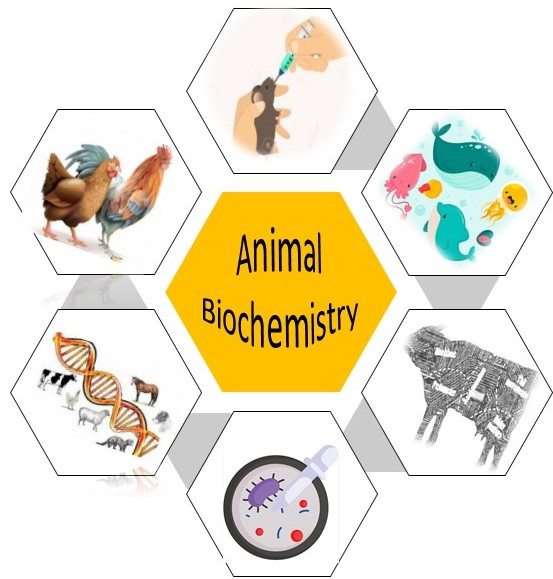- Exploring the pharmacological, nutritional, and statistical developments in the field of food chemistry.
- Investigating the role of polyphenols in the food industry and their nutritional chemistry behind them.
- In the detailed structural analysis and chemical composition of fermentable polysaccharides along with their beneficial role in food sciences.
- The structural analysis of inulin to unveil its significant prebiotic role in the food industry along with associated challenges.
- In depth chemical and nutritional profiling of legumes in the food industry and their uses against several diseases.
- Determining the efficacy of different analytical methods used to investigate the molecular chemistry of different food items.
- Use of analytical chemistry protocols in the quality control and assessment of food chemistry.
- The chemical characteristics of anthocyanins to investigate their antioxidant potential in the food sciences.
- Role of dietary fibers and their chemical analysis to find their pharmaceutical aspects against bowel diseases.
- Chemical investigation of chitosan and its nutritional application in the food industry.
- Biochemical characterization of fatty acids extracted from microbial activity and their effects on human health.
- Characterization, applications and health effects of food additives on human health.
- Role and activity of gut microbiota in digesting xanthan gum; a molecular investigation.
- Role of titanium dioxide as a food additive and its molecular characterization to investigate its health implications.
- Beneficial effects of agro foods additives in the food industry; a sustainable method.
- Molecular advancements in the production of various commercially available nutraceuticals.
- Advancements and challenges for the development of organic agriculture.
- Effect of dietary supplements to treat patients suffering from Alzheimer’s disease.
- The positive ability of nutraceuticals to help recovering from the intestinal infection.
- Role of iodine and its effects on the human health against the goiter.
- Pros and cons of dietary antioxidants and their immunological aspects.
- Molecular analysis and characterization of acetylcholinesterase along with their health implications.
- Use of artificially available meat enzymes in the repining of sausages and analysis of associated challenges.
- Chemical characterization of sphingolipids extracted from the fermented dairy product.
- Efficacy of physiochemical parameters for the characterization of unifloral honey.
- The significant potential of gas chromatography coupled with mass spectrometry to identify the different polysaccharides in honey.
- The significant role of lactic acid producing bacteria in organic farming.
- The significant role of phenols and polyphenols in the beverage industry to ensure quality drinks.
- Biochemical characterization of antioxidants and phenol derivatives produced from the dairy products.
- Molecular investigation to check the efficiency of multiple biotechnical techniques to increase food shelf life and preservation.
- The prominent ability of MALDI mass spectrometry for the efficient carbohydrate analysis.
- Identification of novel biomarkers for the determination of lysine compounds in the cheese.
- Screening and identification of Pseudomonas species to investigate their probiotic potential, a sustainable approach to the food industry.
- Isolation and identification of lactic acid producing bacteria from milk and dairy products.
- Use of lactic acid bacteria for improved quality in the food industry.
- Isolation and chemical characterization of essential amino acids derived from the buttermilk.
- Investigating the potential of lactic acid bacteria to deconjugate bile salt leading towards low cholesterol.
- Site directed mutagenesis in the genetically engineered vegetables and their effects on human health.
- Investigating the role of the immunomodulatory ability of Pseudomonas species derived from vegetable oil.
- Biochemical profiling to determine the antioxidant production in the soyabean proteins.
- Anti-inflammatory potential of fermented vinegar and health implications related to its usage.
- The significant prebiotic ability of different components extracted from cereal.
- Biochemical analysis of inulin type fructans and dietary oligosaccharides to unveil their prebiotic ability.
- The prominent role of Penicillium sp. in enhancing the fiber content in cereals.
- Evaluating the anti-inflammatory effects of lactic acid producing bacteria extracted from the milk and dairy products.
- Investigating the metabolic flux generated by Saccharomyces sp. and their role in the food industry.
- Molecular analysis to investigate the anti-inflammatory and antioxidant potential of guava leaves.
- Genome analysis to investigate the amylase and glucosidase activity in the milk metabolome.
- Upregulation of antitumor activity in the rats treated with the moringa leaves.
- Molecular profiling to check the antifungal and antimicrobial potential of sunflower oil.
- Isolation and identification of gallocatechin extracted from the moringa plant and studying its antimutagenic ability.
- Molecular analysis to investigate the nutritional characterization of leaves extract of Moringa oleifera.
- Identification of auxotrophic markers based on expression analysis of Bacillus sp. from milk.
- The sequential alterations in the yeast genome based on 16S rRNA sequencing during the diary product formation.
- Exploring different variants of yeast and their genome analysis linked with fermentation processing.
- Metabolomic analysis of volatile organic compounds isolated during the process of fermentation.
- Protein profiling of frozen dough made from bioengineered yeast for better quality.
- Evaluating the riboflavin and thiamine content of cereal for better product quality.
- Role of infrared spectroscopy to investigate the food quality during food processing.
- Hazardous effects of pesticides on the food quality and environment.
- Efficacy of sterilization methods on the food quality and processing for long term food storage.
- Use of electronic image analysis along with the challenges associated with it for investigating the food quality.
- Efficacy of isothermal amplification-based assay for on-site visualization of bacterial species isolated from fermented products.
- Investigating different cheese varieties based on the statistical approaches linked with the use of proteolysis.
- Studying the Bacillus subtilis ability to ferment bakery products for better food quality.
- Proteomic analysis of multiple enzyme additives extracted.
- Molecular insights to check the vanillin synthesis and production in the wheat.
- Investigating the improved synthesis of food yeasts; evolution of fermentation.
- Significant yeast application as a probiotic for improved nutritional growth.
- Cross talk to check the efficacy of high-performance liquid chromatography for the efficient evaluation of vitamin content in fruits.
- Proteome analysis to check the microbial alterations during the sotol synthesis.
- Metabolome analysis to reveal the fatty component of cheese whey.
- Use of different transgenic methods for rice biofortification and challenges associated with them.
- Enhanced nutrient content of food mediated with the help of genetic engineering.
- Molecular profiling to investigate the starch content in potatoes based on spectroscopy techniques.
- Better phenol and antioxidant content of rice through gene modification and manipulations.
- Advancements in the use of nanoparticles and their significant role in food chemistry.
- Use of nanomaterials in the quantitative assessment of biochemical food profiles.
- Improved nutrient content in the nano fortified food; a better and sustainable approach for the development of the food industry.
- Efficient and rapid delivery of bioactive compounds in the nano fortified food to improve food quality.
- Molecular insights to evaluate the biochemical profiling of dietary and nutritional polyphenols.
- Assessing the chemical alterations leading toward the antinutritional factors of beans.
- Cross talk to check the effect of chemicals and biochemicals for the synthesis of value-added food products.
- Use of spectroscopy to unleash the fatty component of milk and milk-derived products.
- A significant application of laccases in the modernization of the food industry along with associated challenges.
- Genome analysis to evaluate the nutritional content of value-added food products.
- Investigating the vitamin B and C content of commercially available processed food.
- Determining the genistein and daizein content of soya bean through genome analysis.
- Use of CRISPR CAS9 better nutritional content of food; an emerging technique in the food industry.
- Metabolomic profiling of soybean to unleash its fatty acid composition among different variants.
- Different levels of phenol and isoflavone content in vegetables revealed in different germinated stages.
- Improved levels of antioxidants, glycitein and isoflavone in the black boy milk mediated through microbial activity.
- Molecular profiling to investigate the nutritional components in the alfalfa.
- Use of high-performance liquid chromatography to investigate the flavonoid content of different rice varieties.
- Anticancer and cardiovascular benefits of moringa leaf on human health; a magical healer.
- Pharmaceutical and therapeutic features of soyabean based on better antioxidant and phenol components.
- Green synthesis of metal oxide nanoparticles and their role in the fast delivery of nanomaterial in the food industry.
- The improved nutritional content of citrus fruits based on nanotechnology.
- Genome and behavioral analysis to investigate the role of processed food in the early onset of obesity.
- Quality assessment based on the chemical profiling of processed and fresh food products.
About The Author
Izzah Usman
This is Izzah, a content writer and editor who creates SEO-friendly content and is result oriented. Backed by 10 years of experience in writing and editing, she is equipped with the skill to make content stand out from the clutter, create authority with the audience and build trust.






